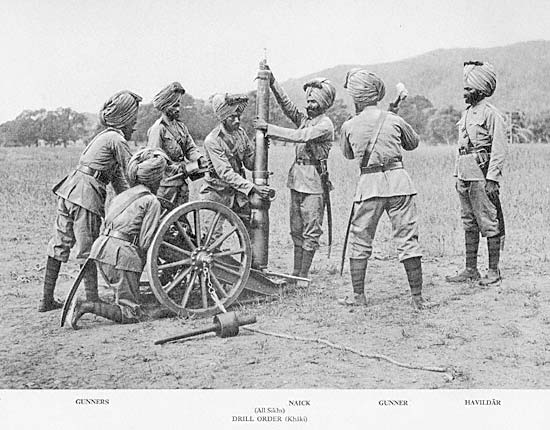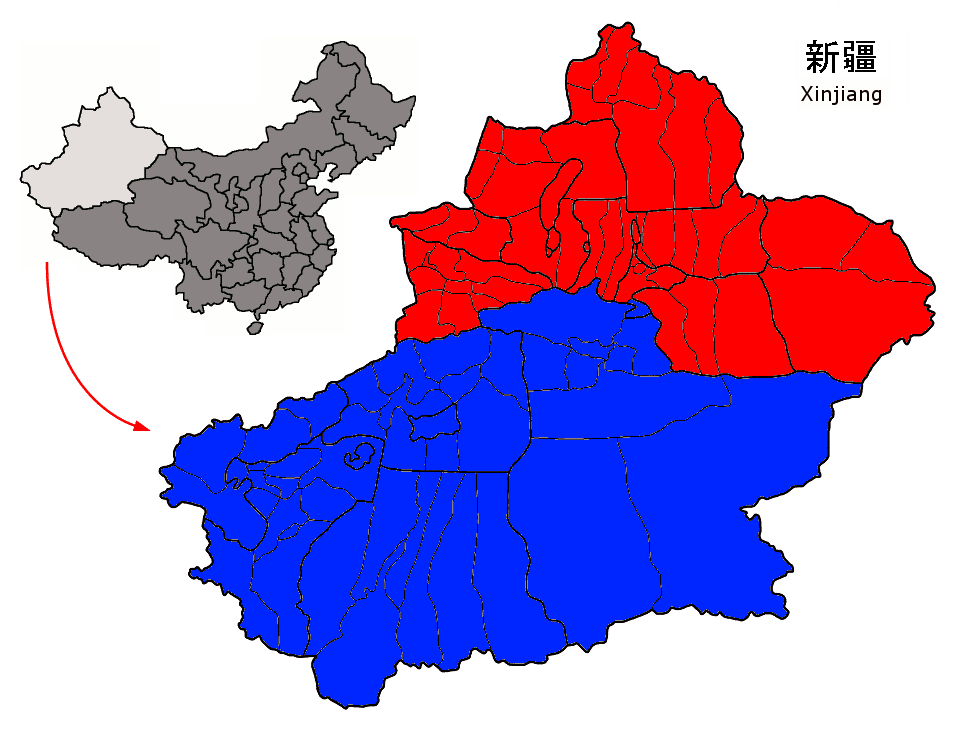|
Shyok (village)
Shyok or Shayok is a village on the bank of the Shyok River in Durbuk tehsil of Leh district in Ladakh, India. It is located at the southern tip of the V-shaped course of the Shyok River, where the Tangtse river joins it from the left. Historically, the winter caravan route from Leh to Yarkand passed through the village. In modern times, India's strategic road to its border post at Daulat Beg Oldi uses the same route. Geography Shyok is connected to Durbuk, 16 km to the south, and Agham, 47 km to the north, via the Agam-Shyok-Durbuk Road, Durbuk is further connected to both Leh and Pangong via the Kharu-Pangong Road. A northwest road connects it beyond Agham to Khalsar 73 km, Diskit 93 km, Panamik 120 km and Sasoma 133 km, along the Shyok River valley. Caravan route Till 1937, between Ladakh and Kashgar (in Xinjiang) on Shyok-DBO route via Karakoram Pass there were frequent trade caravans. Strategic role Shyok has geostrategic importance as it is the last Indian vi ... [...More Info...] [...Related Items...] OR: [Wikipedia] [Google] [Baidu] |
India
India, officially the Republic of India ( Hindi: ), is a country in South Asia. It is the seventh-largest country by area, the second-most populous country, and the most populous democracy in the world. Bounded by the Indian Ocean on the south, the Arabian Sea on the southwest, and the Bay of Bengal on the southeast, it shares land borders with Pakistan to the west; China, Nepal, and Bhutan to the north; and Bangladesh and Myanmar to the east. In the Indian Ocean, India is in the vicinity of Sri Lanka and the Maldives; its Andaman and Nicobar Islands share a maritime border with Thailand, Myanmar, and Indonesia. Modern humans arrived on the Indian subcontinent from Africa no later than 55,000 years ago., "Y-Chromosome and Mt-DNA data support the colonization of South Asia by modern humans originating in Africa. ... Coalescence dates for most non-European populations average to between 73–55 ka.", "Modern human beings—''Homo sapiens''—originated in Africa. Th ... [...More Info...] [...Related Items...] OR: [Wikipedia] [Google] [Baidu] |
Line Of Actual Control
The Line of Actual Control (LAC), in the context of the Sino-Indian border dispute, is a notional demarcation lineAnanth KrishnanLine of Actual Control , India-China: the line of actual contest, 13 June 2020: "In contrast, the alignment of the LAC has never been agreed upon, and it is has neither been delineated nor demarcated. There is no official map in the public domain that depicts the LAC. It can best be thought of as an idea, reflecting the territories that are, at present, under the control of each side, pending a resolution of the boundary dispute." that separates Indian-controlled territory from Chinese-controlled territory. The concept was introduced by Chinese premier Zhou Enlai in a 1959 letter to Jawaharlal Nehru as the "line up to which each side exercises actual control", but rejected by Nehru as being incoherent. Subsequently the term came to refer to the line formed after the 1962 Sino-Indian War. The LAC is different from the borders claimed by each ... [...More Info...] [...Related Items...] OR: [Wikipedia] [Google] [Baidu] |
India-China Border Roads
India-China Border Roads (ICBRs, ICB Roads) is a Government of India project for developing infrastructure along the Sino-Indian border by constructing strategic roads, including bridges and tunnels. The ICBR project is largely in response to Chinese infrastructure development along the borderlands with India. As of May 2021, India is constructing at least 177 roads in two phases of over total length along its Line of Actual Control (LAC) with China under the "Border Infrastructure and Management Fund" (BIMF) of Ministry of Home Affairs. This includes 73 roads of length under ICBR-I (Phase-I) approved in 2005 and additional 104 roads of more than length under ICBR-II (Phase-II) approved in 2020. India has set up an inter-departmental "Empowered Committee" (EC) headed by the Ministry of Defence to expedite the issue resolution and timely completion of ICBR infrastructure after the delay in forest/wildlife clearance and land acquisition, rugged terrain, limited working seaso ... [...More Info...] [...Related Items...] OR: [Wikipedia] [Google] [Baidu] |
Greater Kashmir
''Greater Kashmir'' is an English daily newspaper printed and published from Srinagar, the summer capital of Jammu and Kashmir . The newspaper initially began its edition in 1987 as a weekly newspaper and later, started its first daily publication in 1989. The ''Greater Kashmir'' has its largest base of circulation in Jammu and Kashmir, and is the most widely read English daily newspaper in the state. The Greater Kashmir group (GK Communications Pvt. Ltd) also publishes its sister projects in Urdu language – ''Nawa-e-jhelum'' and ''Kashmir Uzma'' – and the English-language magazine ''Kashmir Ink''. As of 2018, ''Greater Kashmir'' is being published from Srinagar and Jammu at the price of Rs. 5 per copy. Its editor-in-chief is Fayaz Ahmad Kaloo. ''Greater Kashmir'' lately started ''Kashmir Ink'', a weekly magazine featuring Kashmir's artists, poets and also writing many soft stories. The newspaper also launched its Endeavor Page, in which several start-ups in Jammu and Kash ... [...More Info...] [...Related Items...] OR: [Wikipedia] [Google] [Baidu] |
Sasoma–Saser La Road
The Sasoma– Sasser La Road or the Sasoma–Saser Pass Road is a road reportedly being built in Ladakh between Nubra and Daulat Beg Oldi (DBO). Being constructed at a height of by the Border Roads Organisation under Project Himank, despite the glaciated mountain tops that it has to pass through. It is expected to provide an alternative access to DBO, other than the Darbuk–Shyok–DBO Road. It is considered to be of strategic importance.India working on two roads in Ladakh amid border row Hindustan Times, 9 July 2020. See also * |
Indian Military
The Indian Armed Forces are the military forces of the Republic of India. It consists of three professional uniformed services: the Indian Army, Indian Navy, and Indian Air Force.—— Additionally, the Indian Armed Forces are supported by the Central Armed Police Forces, Assam Rifles, Indian Coast Guard and Special Frontier Force and various inter-service commands and institutions such as the Strategic Forces Command, the Andaman and Nicobar Command and the Integrated Defence Staff. The President of India is the Supreme Commander of the Indian Armed Forces but the executive authority and responsibility for national security is vested in the Prime Minister of India and their chosen Cabinet Ministers. The Indian Armed Forces are under the management of the Ministry of Defence of the Government of India. With strength of over 1.4 million active personnel, it is the world's second-largest military force and has the world's largest volunteer army. It also has the third-la ... [...More Info...] [...Related Items...] OR: [Wikipedia] [Google] [Baidu] |
Karakoram Pass
The Karakoram Pass () is a mountain pass between India and China in the Karakoram Range. It is the highest pass on the ancient caravan route between Leh in Ladakh and Yarkand in the Tarim Basin. 'Karakoram' literally means 'Black Gravel' in Mongolic. Historically, the high altitude of the pass and the lack of fodder were responsible for the deaths of countless pack animals while the route was notorious for the trail of bones strewn along the way. There is an almost total absence of vegetation on the approaches to the pass. Travelling south from the pass involved three days' march across the barren Depsang Plains at about . To the north, the country was somewhat less desolate and involved travellers crossing the relatively easy and lower Suget Dawan (or Suget Pass) before reaching the lush grazing grounds around Shahidullah or Xaidulla in the upper valley of the Karakash River. The pass is in a saddle between two mountains and about wide. There is no vegetation or icec ... [...More Info...] [...Related Items...] OR: [Wikipedia] [Google] [Baidu] |
Xinjiang
Xinjiang, SASM/GNC: ''Xinjang''; zh, c=, p=Xīnjiāng; formerly romanized as Sinkiang (, ), officially the Xinjiang Uygur Autonomous Region (XUAR), is an autonomous region of the People's Republic of China (PRC), located in the northwest of the country at the crossroads of Central Asia and East Asia. Being the largest province-level division of China by area and the 8th-largest country subdivision in the world, Xinjiang spans over and has about 25 million inhabitants. Xinjiang borders the countries of Mongolia, Russia, Kazakhstan, Kyrgyzstan, Tajikistan, Afghanistan, Pakistan and India. The rugged Karakoram, Kunlun and Tian Shan mountain ranges occupy much of Xinjiang's borders, as well as its western and southern regions. The Aksai Chin and Trans-Karakoram Tract regions, both administered by China, are claimed by India. Xinjiang also borders the Tibet Autonomous Region and the provinces of Gansu and Qinghai. The most well-known route of the historic Silk Road ... [...More Info...] [...Related Items...] OR: [Wikipedia] [Google] [Baidu] |
Kashgar
Kashgar ( ug, قەشقەر, Qeshqer) or Kashi ( zh, c=喀什) is an oasis city in the Tarim Basin region of Southern Xinjiang. It is one of the westernmost cities of China, near the border with Afghanistan, Kyrgyzstan, Tajikistan and Pakistan. With a population of over 500,000, Kashgar has served as a trading post and strategically important city on the Silk Road between China, the Middle East and Europe for over 2,000 years, making it one of the oldest continuously inhabited cities in the World. At the convergence point of widely varying cultures and empires, Kashgar has been under the rule of the Chinese, Turkic, Mongol and Tibetan empires. The city has also been the site of a number of battles between various groups of people on the steppes. Now administered as a county-level unit, Kashgar is the administrative center of Kashgar Prefecture, which has an area of and a population of approximately 4 million as of 2010. The city itself has a population of 506,640, and its ... [...More Info...] [...Related Items...] OR: [Wikipedia] [Google] [Baidu] |
Sasoma
Sasoma is a settlement in Nubra Valley, Ladakh consisting of villages such as the Gya village. A road is being constructed from Sasoma to Saser La by the Border Roads Organisation The Border Roads Organisation (BRO) is a road construction executive force in India that provides support to and is now a part of the Indian Armed Forces. BRO develops and maintains road networks in India's border areas and friendly neighboring ... which will be the world first glaciated motorable road once completed. Another road, the Khalsar-Sasoma road with a bridge on the Chamesahn Lungpa stream, connects Khalsar to Sasoma. References {{Ladakh Ladakh ... [...More Info...] [...Related Items...] OR: [Wikipedia] [Google] [Baidu] |
Panamik
Panamic or Panamik is a village in the Leh district of Ladakh in India. It is located in the Nubra tehsil A tehsil (, also known as tahsil, taluka, or taluk) is a local unit of administrative division in some countries of South Asia. It is a subdistrict of the area within a district including the designated populated place that serves as its administr .... Hot sulphur springs are found in the village. Panamik is a contraction of སྤང་ན་ཆུ་མིག་ 'Spang na Chumik', meaning 'the spring in the meadows'. A hot water-spring flows through the village meadows, hence the name ... Demographics According to the 2011 census of India, Panamic has 186 households. The effective literacy rate (i.e. the literacy rate of population excluding children aged 6 and below) is 80.44%. References {{Leh district Villages in Nubra tehsil ... [...More Info...] [...Related Items...] OR: [Wikipedia] [Google] [Baidu] |





_of_Kashgar%2C_73_CE.jpg)